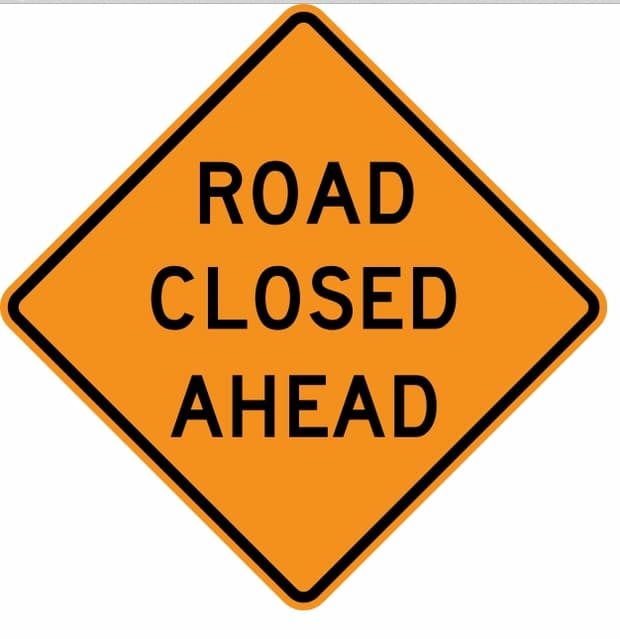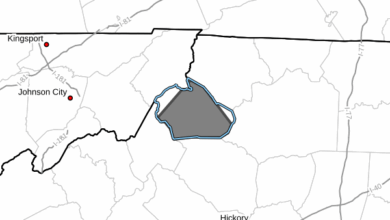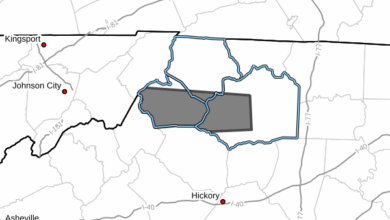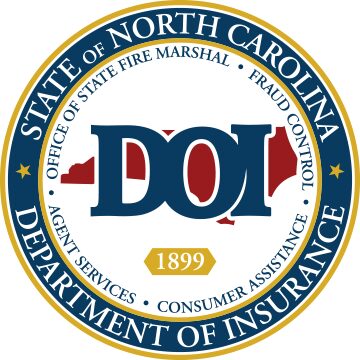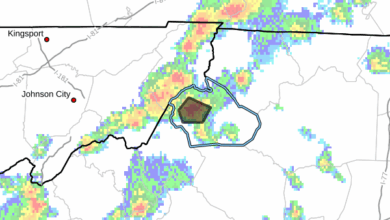Last Updated on August 20, 2014 3:37 pm
Rural Counties remain the killing grounds for traffic deaths in North Carolina. Despite a reduction in traffic deaths in 2013 and less traffic on the road, three people on average die every day in the state in a traffic crash, according to AAA Carolina’s 20th annual ranking of the state’s most dangerous counties for traffic.
Pedestrian deaths represent one in six of every traffic fatality in the state, with the majority of these deaths occurring in the more heavily traveled urban areas.
“We are making progress in reducing traffic deaths in North Carolina and that is a plus for every motorist, but we need to pay more attention to the traffic death hot spots like Graham County, one of the most dangerous counties in the nation for motorcycle crashes,” said David Parsons, CEO and president of AAA Carolinas.
Graham County had 180 crashes and four deaths, despite having less than one tenth of one percent of the total vehicle miles traveled in the state, making it the top county with highest probability of being in a fatal crash, based on AAA’s analysis of 2013 data from the North Carolina Department of Transportation.
Traffic deaths have been declining annually since 2010 in North Carolina – 1,162 last year, aided by safer cars, fewer miles driven and amped up law enforcement. “It’s great to see a decrease in road deaths, but it’s still a concern when you consider that more than three people still die every day on North Carolina roads,” said Parsons.
Graham, Alleghany, Alexander, Bladen and Vance counties top AAA’s list of dangerous counties for traffic fatalities last year. The five counties combined for 40 traffic deaths, despite having only two percent of the state’s total vehicle miles traveled.
Behind Texas and California, North Carolina ranked third nationally for the most non-Interstate-rural road traffic deaths with 844 fatalities, according to 2012 federal data, the latest national statistics available.
“Rural counties usually have narrower roads with inadequate lighting, and fading or non-existent road markings,” said Parsons. “Driving mistakes that may be recoverable on city roads can be deadly on rural roads.”
AAA’s ranking of the most dangerous counties in the state is based on the likelihood of a certain type of crash based on total vehicle miles driven, creating a level playing field for analysis.
The counties with the highest chance of being involved in any kind of a collision were Pitt, New Hanover, Vance, Person and Stanly. Pitt has been ranked the most dangerous county for having a traffic collision of any type for the past 6 years. With 4,572 traffic crashes in 2013, Pitt County averages 318 crashes per 100 million vehicle miles traveled (VMT). New Hanover averages 293 crashes per 100 VMT, Vance 273, Person 270 and Stanly with 264.
For a crash in which someone was injured, Graham, Pitt, New Hanover, Gaston and Hoke counties were the top five.
Pedestrians
The most dangerous county for pedestrian collisions and injurious crashes was Tyrrell. Tyrrell is the least populous county in the state but had 86 crashes with injuries in 2013.
Mecklenburg, the most populous county in North Carolina, led all counties in pedestrian deaths with 24 fatalities last year; however, Warren, Yancey, Currituck, Pamlico, and Cherokee are the top 5 counties with the best chance of a pedestrian being killed, with fewer vehicle miles traveled.
Statewide, pedestrian deaths accounted for 17% of all traffic fatalities in the state – putting North Carolina in the top 10 most dangerous states in the nation for pedestrians. Mecklenburg, Fayetteville, Wake and Guilford counties accounted for nearly a third of the state’s 200 pedestrian deaths last year.
Motorcycles
Graham County, located in the North Carolina Mountains on the Tennessee border, continued to be the most dangerous county for motorcycles, topping the list for collisions, injury and fatal crashes. The county of just under 8,700 people is home to “the tail of the dragon,” a scenic road of 11 miles, 318 curves, making it a popular – but dangerous – drive for motorcyclists.
The other counties that ranked most dangerous for fatal motorcycle accidents were Pamlico, Camden, Dare and Yancey.
Swain County was in AAA’s top five safest counties for any kind of vehicle collision or injurious crash. However, Swain was extremely dangerous for motorcycles, ranking fourth for the best chance of being in a motorcycle collision, and fifth for injurious motorcycle crashes (see attached chart).
Tractor-Trailers
Anson was the most dangerous county for tractor-trailer collisions, and was highest in having the best chance of being in an injurious crash in 2013.
The top counties for fatal crashes with tractor-trailers are Gates, Hertford, Ashe, Cherokee and Northampton. Gates, Hertford and Northampton are near I-95, a major interstate transportation route. Ashe is located between I-77 and I-81 and along with Cherokee is located in a mountainous region with curving roads that are not designed to handle tractor-trailer traffic.
Safest Counties
Polk County was ranked as the safest county for not being in a collision, and Pasquotank County offered the best chance of not being in a fatal crash in 2013.
Pasquotank, Washington, Warren, Tyrrell, Hyde, Chowan and all had zero fatalities in 2013, so the ranking was based on total vehicle miles traveled, which was highest in Pasquotank County.
The safest counties in 2013 for all motorists, with the smallest percentage of accidents per vehicle miles traveled were:
Total crashes: Polk, Haywood, Camden, Jackson and Swain
Injury crashes: Camden, Tyrrell, Currituck, Swain and Perquimans
Fatal crashes: Pasquotank, Warren, Washington, Chowan and Tyrrell
The deadliest county for the highest number of fatal crashes was Mecklenburg with 61 fatal crashes in 2013, down from 68 in 2012.
For all vehicles in North Carolina, the total number of crashes in 2013 was 220,524, up from 213,856 in 2012.
AAA Carolina’s 20th annual Dangerous County analysis is one of several ways to look at North Carolina traffic crash data and is done to remind motorists of the need for safe and defensive driving, especially in counties with above-average traffic crashes, injuries and deaths.
AAA Carolinas receives traffic statistics from the North Carolina Department of Transportation and performs its own analysis to determine the most dangerous counties based on vehicle miles traveled.







